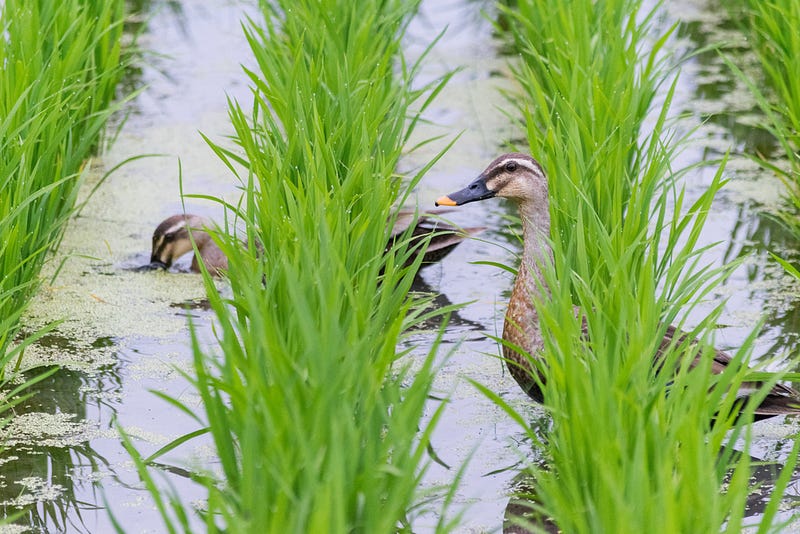Revolutionizing Agriculture: Climate-Smart Pest Management Techniques
Written on
Chapter 1: The Evolution of Agriculture
The journey of agriculture began approximately 10,000 years ago when humans transitioned from nomadic lifestyles to settled farming communities. This pivotal shift involved the domestication of plants and animals, marking the dawn of agriculture—a practice that remains crucial to our society today.
Though agriculture is essential for food security and offers numerous benefits, it also poses risks to our food supply and the environment. Unsustainable farming methods contribute to various ecological problems, including climate change, pollution, and biodiversity loss. For instance, livestock methane emissions exacerbate global warming, while excessive fertilizer application leads to water contamination, and pesticide use threatens insect populations.
These environmental challenges ultimately impact agricultural yields. Extreme weather events—such as droughts, floods, and rising sea levels—have resulted in significant declines in crop production, with soybean yields dropping by 16.7% and maize yields by 10.8%. This decline is alarming, especially with a growing global population projected to strain food security by 70% by 2050.
To address these issues, it's imperative to enhance agricultural productivity while adopting more sustainable practices. In previous discussions, I highlighted several effective strategies:
- Integrated systems (see further readings: 22 Advantages of Silvopasture As Type Of Regenerative Agriculture and Why Ducks are Excellent Fertilizers)
- Cold-plasma seed treatment (see further readings: Cold Plasma For A Hot Planet: How Seed Priming Supports Higher Yields and 5 Reasons Why Cold Plasma Treatment Supports Higher Yields)
- The role of fungi (see further reading: How Fungi Can Help Plants Grow and Make Agriculture More Sustainable)
- Implementing organic farming (see further reading: How Organic Farming Can Be Made Even More Environmentally Friendly)

Chapter 2: The Threat of Pests
Pests represent a significant threat to global food security, accounting for 20 to 40% of food supply losses. As environmental conditions deteriorate, the prevalence and impact of pests are expected to rise. A notable example is the introduction of the bacteria X. fastidiosa from South America to southern Europe, where it has devastated olive tree populations due to altered climate conditions.
Compounding these challenges, climate change has increased reliance on pesticides to manage pest populations. In the northeastern U.S., potato crops now require up to four additional fungicide applications to combat late blight, highlighting the pressing need to mitigate environmental impacts.
To address the detrimental effects of conventional agricultural practices, a shift towards reduced chemical pesticide use is necessary. Innovative technologies, such as laser-guided pesticide application, can optimize chemical use based on tree density and size (see further reading: How Lasers Can Reduce The Need For Pesticides). Additionally, adopting climate-smart pest management strategies can enhance agricultural resilience and sustainability.
The first video titled Climate Smart Agriculture: Challenges and Opportunities Dialogue explores the various challenges and opportunities within climate-smart agriculture, emphasizing the need for sustainable practices in today's changing environment.
Chapter 3: Implementing Climate-Smart Pest Management
Climate-smart pest management encompasses several strategies that enhance sustainability in agriculture:
Section 3.1: Preventative Measures
The initial approach involves implementing preventative strategies to preemptively combat pests and diseases. These measures include:
- Cultivating pest-resistant plant varieties through crossbreeding.
- Practicing crop rotation to disrupt pest life cycles.
- Encouraging natural predators, such as ladybugs, to control pest populations.

Section 3.2: Monitoring and Prediction
The second strategy focuses on the monitoring and forecasting of pests and diseases. Effective monitoring involves gathering detailed information about pest occurrences, which can be conducted by government and private entities alike. Programs like Tom-Cast and Skybit provide valuable insights into pest conditions and enable farmers to make informed decisions.
The second video titled Reducing Inputs: Integrated Pest Management delves into integrated pest management practices, showcasing their effectiveness in reducing chemical usage and promoting sustainable agriculture.
Section 3.3: Early Diagnosis
The third method emphasizes the importance of early diagnosis of plant diseases through advanced techniques, such as:
- Real-time PCR for rapid DNA analysis.
- Next-generation DNA sequencing for detailed microbial identification.
- Fluorescence in situ hybridization (FISH) for detecting specific DNA sequences.
These technologies allow for quicker and more precise disease detection, enabling timely interventions.

Section 3.4: Effective Interventions
The final strategy involves implementing environmentally friendly interventions that are economically viable. These methods prioritize low-risk solutions, such as mechanical traps and natural pest deterrents, while optimizing chemical applications based on environmental conditions.
Example Application: A climate-smart pest management initiative in Vietnam from 2009 to 2011 successfully employed zero-tillage rice-potato farming techniques, significantly reducing water usage by over 80% and herbicide consumption by 50%. This approach not only decreased greenhouse gas emissions but also promoted beneficial microbial growth, enhancing plant health.
Conclusion: Taking Action for Sustainable Agriculture
In summary, climate-smart pest management can foster sustainable agricultural practices through preventive strategies, monitoring and prediction, early disease diagnosis, and effective interventions.
How You Can Contribute:
- Purchase organic products.
- Support food grown with climate-smart practices.
- Engage in home gardening (see further reading: How Urban Gardening Contributes to Sustainable Development Goals).
- Advocate for policies that promote reduced chemical usage in agriculture.
Which of these actions can you incorporate into your life? Do you have additional ideas to promote climate-smart pest management? Share your thoughts and inspire others!
Credit:
This article is derived from the work of Bouri, M., Arslan, K. S., & Şahin, F. (2023). Climate-Smart Pest Management in Sustainable Agriculture: Promises and Challenges. Sustainability, 15(5), 4592.